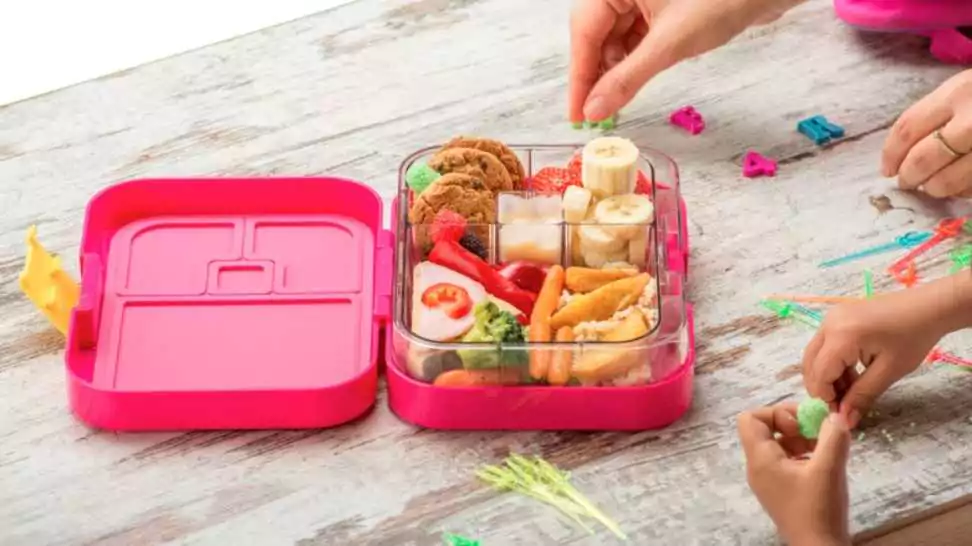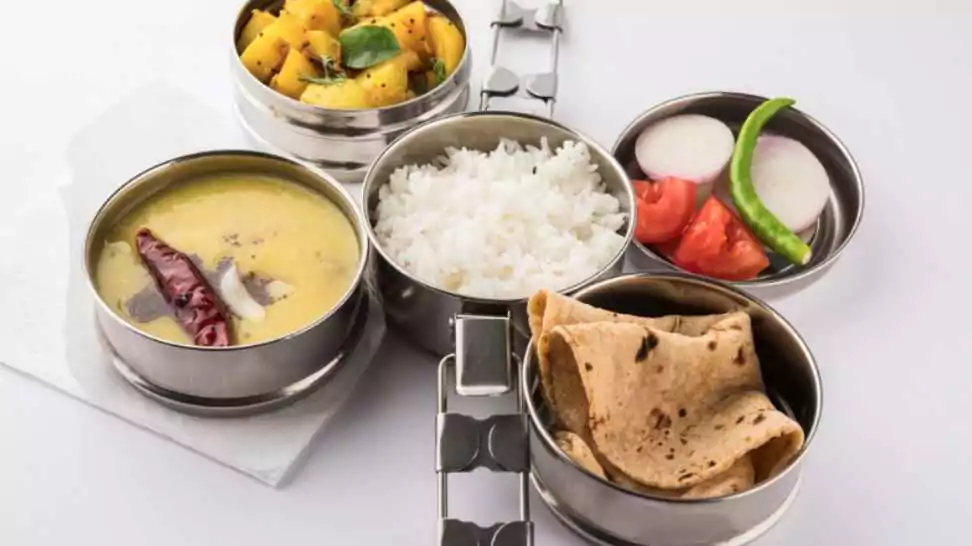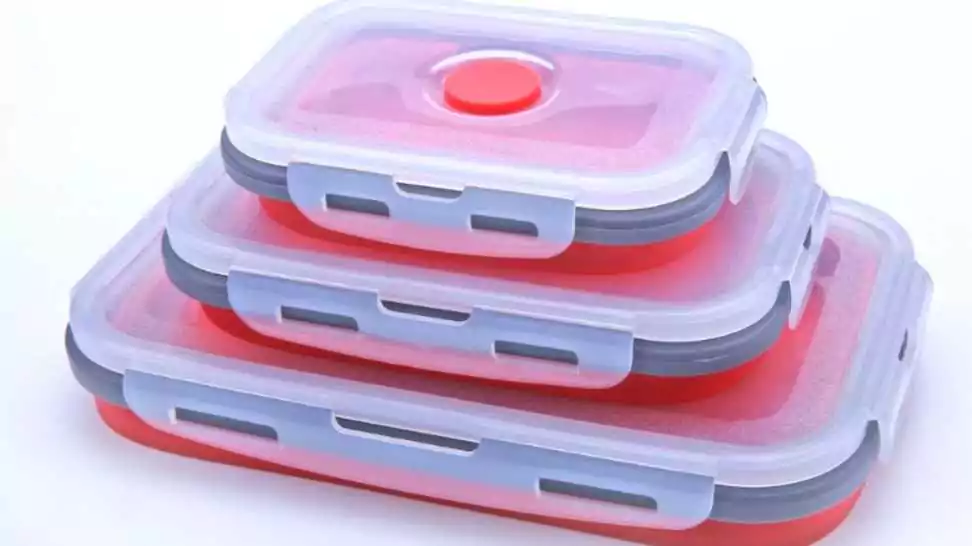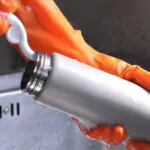Which Material Lunch Box Is Safe For Kids?

The health and safety of our children are paramount, extending beyond their diet to the containers they use for their meals. Recent awareness about the risks of chemical leaching from certain materials used in lunch boxes has highlighted the importance of choosing the right material for your child’s lunch box. It’s a decision that affects their daily school life, as these containers hold their meals, snacks, and drinks.
Not all lunch box materials are equal. Some may contain harmful chemicals that could leach into food under various conditions. As parents, it’s vital to understand these risks to make informed decisions about your children’s health. This blog aims to guide you on which material lunch box is safe for kids, examining its advantages and disadvantages. We will focus on plastic, stainless steel, glass, and other innovative materials, helping you find a lunch box that is safe, convenient, and stylish for your child.
1 Understanding the Basics
When it comes to selecting the right lunch box for your child, the primary concern often revolves around its material. But why is this so critical? The answer lies in a phenomenon known as chemical leaching and its implications on health and safety.
What is Chemical Leaching?
Chemical leaching occurs when chemicals from the materials used in the manufacturing of containers, like lunch boxes, seep into the food that is stored inside them. This process can be accelerated by various factors such as heat, the acidity of the food, and the age of the container.
The concern with leaching is particularly high in materials like certain plastics, which can contain harmful chemicals like BPA (Bisphenol A), phthalates, and PVC (Polyvinyl Chloride). These chemicals are potential endocrine disruptors, which means they can interfere with the body’s hormonal system and have been linked to a variety of health issues.
Children are especially susceptible to these risks due to their developing bodies and higher metabolic rates. Exposure to these chemicals at a young age can have long-term health implications. Therefore, choosing a lunch box that minimises the risk of chemical leaching is a crucial aspect of safeguarding your child’s health.
Criteria for Choosing a Safe Lunch Box

When selecting a lunch box for your child, there are several key criteria to consider to ensure safety and practicality:
Non-toxic Materials: The lunch box should be made from materials that are free from harmful chemicals. Look for labels that indicate the product is BPA-free, phthalate-free, and PVC-free. Stainless steel and certain types of glass are generally safe bets, as they are inert and do not leach chemicals.
Durability: Children’s lunch boxes should withstand the rough and tumble of daily school life. Durable materials ensure that the lunch box lasts longer and remains safe for use over time. A cracked or broken lunch box can become a breeding ground for bacteria or increase the risk of chemical leaching.
Ease of Cleaning: Lunch boxes should be easy to clean to maintain hygiene. Materials that are dishwasher safe or can be easily washed by hand are preferable. Complex designs with hard-to-reach nooks and crannies should be avoided as they can harbour food residues and bacteria.
2 Common Materials Used in Lunch Boxes
The materials used in lunch boxes vary widely, each offering its own set of benefits and drawbacks. Understanding these can help you make an informed decision that suits your child’s needs and your own preferences.
Plastic Lunch Boxes

Pros:
- Lightweight: Easy for children to carry.
- Affordable: Generally less expensive than other materials.
- Variety of Designs: Available in numerous colours and themes appealing to children.
Cons:
- Potential BPA and Phthalates Exposure: Some plastics contain harmful chemicals that can leach into food.
- Environmental Impact: Plastic is not biodegradable and contributes to environmental pollution.
Tips for Safer Plastic Options
Look for lunch boxes that are labelled as BPA-free and phthalate-free. Also, consider the recyclability of the plastic to reduce environmental impact.
Stainless Steel Lunch Boxes

Pros:
- Durable: Resistant to damage and long-lasting.
- Non-Reactive: Does not leach chemicals into food.
- Long-Lasting: A good investment over time.
Cons:
- Heavier: More weight for children to carry.
- Usually More Expensive: Higher initial cost compared to plastic options.
Addressing Nickel and Chromium Leaching Concerns
Choose food-grade stainless steel, which minimises the risk of leaching. High-quality stainless steel lunch boxes are typically made with safer alloys.
Glass Lunch Boxes

Pros:
- Chemical-Free: No risk of harmful chemicals leaching.
- Microwave Safe: Convenient for reheating food.
Cons:
- Fragile: Risk of breaking if dropped.
- Heavier: More weight in the backpack.
Tips for Using Glass Safely with Children:
Consider encasing the glass lunch box in a protective sleeve and instruct children on careful handling. Opt for tempered glass for added durability.
Silicone Lunch Boxes

Pros:
- Flexible: Easy to pack and store.
- Microwave and Dishwasher Safe: Convenient for everyday use.
Cons:
- Heat Stability Concerns: Quality varies, and some may not be suitable for high temperatures.
Choosing High-Quality Silicone:
Ensure the silicone is food-grade and check for certifications that guarantee heat resistance and safety for food contact.
3 Additional Considerations
When choosing the right lunch box for your child, it’s important to consider not just the material from a health perspective, but also its environmental impact and practicality in everyday use.
Environmental Impact
The environmental footprint of a lunch box material is an important consideration, especially in our increasingly eco-conscious world.
- Plastic Lunch Boxes: Although they are lightweight and affordable, their production and disposal contribute significantly to environmental pollution. Choosing recycled plastics and ensuring the lunch box is recyclable can mitigate some of these concerns.
- Stainless Steel Lunch Boxes: They have a higher initial environmental impact due to the energy-intensive production process. However, their durability and recyclability make them a more sustainable choice in the long run.
- Glass Lunch Boxes: Glass production has a moderate environmental impact, but its recyclability and longevity make it a good eco-friendly option.
- Silicone Lunch Boxes: Silicone is more environmentally friendly than plastic but less so than glass or stainless steel. Opt for food-grade silicone that is durable and recyclable.
Tips for Choosing Eco-Friendly Lunch Boxes
- Look for lunch boxes made from recycled or sustainable materials.
- Consider the longevity of the product – a more durable lunch box means less frequent replacement.
- Check the recyclability of the material to ensure it doesn’t end up in a landfill.
Ease of Use and Cleaning
The practicality of a lunch box in terms of its maintenance and child-friendliness is as important as its material.
- Cleaning: All materials have their pros and cons. Stainless steel and high-quality plastics are generally dishwasher safe, making them easy to clean. Glass is also easy to clean but requires careful handling. Silicone can be dishwasher safe but might retain odours over time.
- Child-Friendliness: Consider how easy the lunch box is for a child to open and close. Stainless steel and plastic varieties usually come with user-friendly latches. Silicone and glass might be more challenging for younger children to handle securely.
Tips for Practical Use
- Choose a lunch box with a simple, easy-to-open design for younger children.
- Ensure the material is dishwasher safe to save time on cleaning.
- Consider the weight and size of the lunch box, especially for younger children who might find heavier materials like glass or stainless steel difficult to carry.
4 Safety Standards and Certifications
In the quest to find the safest lunch box for your child, understanding the various safety standards and certifications can be invaluable. These certifications are not just labels; they are assurances that the product has been tested and meets specific safety criteria.
Important Safety Certifications
- FDA-Approved: In the United States, the Food and Drug Administration (FDA) approves materials for food contact. An FDA-approved label means that the material has been tested and deemed safe for contact with food. This is crucial for lunch boxes, as they are in direct contact with your child’s food.
- LFGB-Certified: The LFGB certification is a German standard, often considered one of the strictest in the world when it comes to food contact materials. Products with this certification have undergone rigorous testing for safety and are free from harmful substances.
The Role of Government Regulations
Government regulations play a crucial role in ensuring the safety of lunch boxes. These regulations are in place to protect consumers from exposure to harmful materials and chemicals. In the United States, the Consumer Product Safety Commission (CPSC) and the FDA set guidelines and standards for consumer goods, including those used for food storage and transportation.
Regulations on Harmful Substances: Agencies like the FDA regulate the use of substances like BPA, phthalates, and lead in products intended for food contact. They ensure that products on the market do not exceed safe levels of these substances.
Quality Control and Testing: Government regulations also mandate regular quality control and testing of products. Manufacturers are required to comply with these regulations and often display certifications as proof of compliance.
Tips for Parents
- Always check for safety certifications when purchasing a lunch box. Look for labels like FDA-approved, LFGB-certified, BPA-free, phthalate-free, and lead-free.
- Be cautious of products with no safety certifications or from manufacturers with dubious quality standards.
- Stay informed about any recalls or safety alerts related to children’s lunch boxes.
5 Making the Right Choice for Your Child
The journey to selecting the ideal lunch box for your child is unique and dependent on various factors specific to your child’s needs and your family’s lifestyle. It’s about balancing the pros and cons of each material while keeping in mind the health, safety, and environmental considerations discussed earlier.
Individual Needs and Preferences
Every child is different, and what works for one may not work for another. For instance, a younger child might benefit from a lightweight, easy-to-open plastic lunch box (BPA-free and phthalate-free, of course), while an older child might prefer the durability and style of a stainless steel option.
- Consider Your Child’s Age and Habits: Younger children might need something more durable and easy to handle, while older children might prioritise style and capacity.
- Think About Your Routine: If your child’s lunch often includes re-heatable items, a microwave-safe material like glass or certain plastics might be more convenient.
- Allergies and Sensitivities: Some children might be sensitive to certain materials. In these cases, hypoallergenic materials like high-grade stainless steel or glass can be safer options.
Weighing the Pros and Cons
- Health and Safety: Prioritise materials that are non-toxic and have the lowest risk of chemical leaching.
- Environmental Impact: Consider the environmental footprint of the material, keeping in mind sustainability and recyclability.
- Ease of Use and Maintenance: Factor in how easy the lunch box is to clean and maintain, and whether it suits your child’s ability to use it independently.
Encouraging Parental Involvement
- Stay Informed: Keep up-to-date with the latest information on material safety and product recalls.
- Involve Your Child: If appropriate, involve your child in the decision-making process. This can help them feel more responsible for their belongings and more inclined to use and care for their lunch box properly.
- Balance is Key: Remember, no material is perfect. The goal is to find the best possible option that aligns with your priorities and your child’s needs.
6 Wrapping Up
In conclusion, the decision on which lunch box material to choose for your child is an important one. As a parent, your informed decision-making is crucial in ensuring the safety and health of your child. Consider the pros and cons of each material, think about your child’s specific needs and habits, and always check for safety certifications and environmental impact.
Remember, the right lunch box can contribute to a healthy, enjoyable mealtime experience for your child, fostering good eating habits and a positive attitude towards food. Stay informed, stay involved, and choose wisely for your child’s well-being.
Community Q&A
About This Article
This article has been viewed 91 times.



